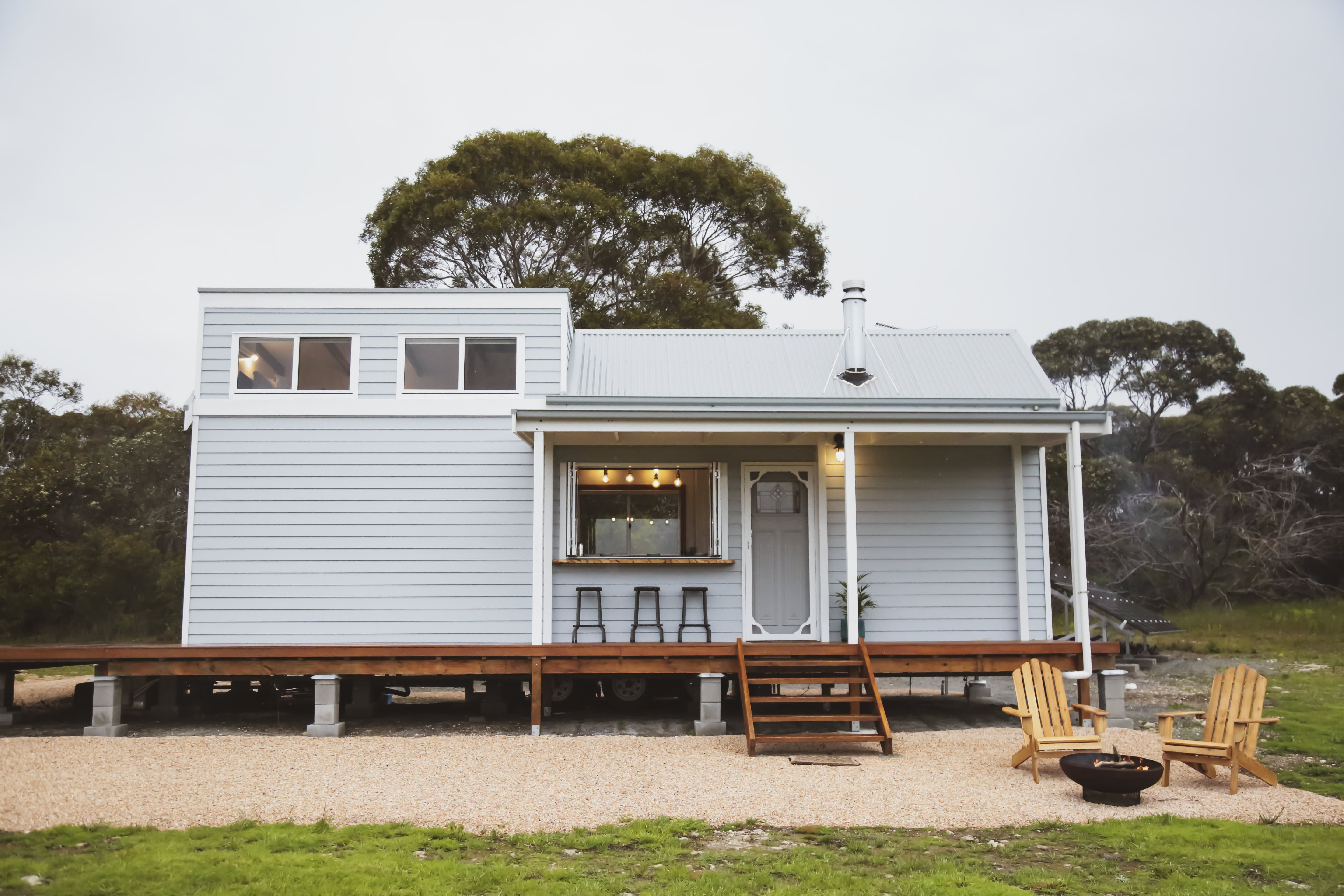An ADU can provide homeowners with additional space and a new source of income.

An independent residence built on the same lot as a single-family home is known as an accessory dwelling unit (ADU). These units, also referred to as granny flats, backyard tiny homes, or in-law suites, are becoming increasingly popular in home building and renovation. They are less expensive to construct than single-family homes and can be incorporated into an existing property or stand alone.
ADUs can significantly enhance your property value while providing space for renters, guests or family members, making them a cost-effective solution to the nationwide housing shortage.
What is an ADU?
A detached or attached housing unit constructed by a homeowner on their property, with a size ranging from 500 to 1,200 feet, is known as an ADU.
As housing shortages have become more prevalent, local and state governments have eased construction regulations on residential lots, leading to the growing popularity of ADUs.
In California, since 2019, homeowners have been allowed to construct ADUs up to 1,200 square feet, regardless of local regulations, and the state has established grant programs to promote their development.
Similarly, cities such as Austin, Denver, and Phoenix, as well as states including Connecticut, New York, Maine, Oregon, and Washington, have relaxed regulations on ADUs.
Common uses for an ADU
Accessory dwelling units have a lot of potential:
- Renting out an ADU can help you recover the cost of construction and generate additional income, allowing you to earn extra cash after paying off the loan.
- Living together: With high housing prices and childcare costs, many parents and their adult children are sharing the same living space. ADUs can be a viable option for both couples struggling to afford a home and retirees who can't keep up with the expenses of maintaining a house.
- Using an ADU as a guest house can increase your property value when selling, but it may also deter some buyers due to the presence of another unit on the property.
Types of ADUs
There are several types of accessory dwelling units.
- An ADU can be constructed within a section of the main house, such as a basement, attached garage, or attic.
- These units, situated outside the primary dwelling, are commonly known as detached ADUs, DADUs, backyard tiny homes, and granny flats.
- An ADU can be constructed using an existing structure, such as a detached garage or an old guest house.
- Manufactured or modular ADUs are transported to your lot and positioned in the backyard with a crane, while stick-built ADUs are constructed on-site using traditional wood framing methods and assembled on the foundation.
How much does an ADU cost?
The cost of an ADU can fluctuate depending on its size, type, and location, with prices ranging from $50,000 to over $400,000.
Homeowners must pay for permitting, design, and inspections in addition to construction and labor. To simplify the process, companies like Abodu and Villa Homes offer prefab ADUs and handle the entire process, including finding an architect, contractor, and subcontractors.
How to finance your ADU
Several financing options are available for building an ADU if you don't have cash on hand.
Home equity loan
A second mortgage, known as a home equity loan, is secured by the value of your home.
A personal loan typically offers lower interest rates, allows for a larger borrowed amount, and provides up to 30 years to repay both the principal and interest.
Two top home equity lenders, Discover and Rocket Mortgage, offer up to $30,000 in loans to borrowers with just 10% equity in their homes.
Home equity line of credit
A home equity line of credit (HELOC) is a type of loan that uses your home as collateral, but instead of a lump sum loan, it provides a revolving line of credit with a 10-year draw period. This can be useful for unexpected expenses, such as building an ADU.
PNC Bank offers HELOCs with a maximum draw of $1 million, while TD Bank offers draws ranging from $10,000 to $6 million.
Home equity sharing
An investor purchases a share of your home's future value by providing a lump sum payment through a home equity sharing agreement. At the end of a predetermined term or upon the sale of the home, you will owe the investor the original loan amount plus a risk adjustment fee, which is a percentage of the home's new value.
Although home equity sharing entails a substantial upfront payment and the risk adjustment fee may fluctuate, it could be a suitable choice if you have poor credit or a history of bankruptcy due to more lenient eligibility criteria.
A credit score of 500 is sufficient to secure a home equity agreement with HomeTap or Point.
Cash-out refinance
A cash-out refinance is a simpler option for managing two home loans. It replaces your existing mortgage with a larger one, paying off your existing mortgage and giving you the remaining funds in cash. Some lenders allow you to refinance up to 90% of your home's value.
You can close on your cash-out refinance from your house with LoanDepot and get your new loan quickly with Rocket Mortgage, which has an average refinance close timeline of 21 days, significantly less than the average time to close.
Personal loan
If your project requires a loan, you may be able to take out a personal loan. However, most lenders only offer personal loans up to $100,000, which may not be sufficient for an ADU. Interest rates on personal loans are typically higher than those on a home equity loan or a home equity line of credit (HELOC). Despite this, personal loans are unsecured, meaning you won't risk foreclosure if you're unable to make payments.
Government loans and grants
Governments and nonprofits provide subsidies for building an ADU through forgivable loans and grants.
In California, the average monthly rent is $2,500, as stated by Redfin. The state's government programs encourage the construction of ADUs for affordable rental housing. Through the CalHFA Grant Program, homeowners who earn less than 80% of the area median income can apply for up to $40,000 to cover ADU pre-building costs.
Denver homeowners at all income levels can make ADUs more affordable through the West Denver Single Family Plus ADU Pilot Program. The program offers seven prefab floor plans for a detached ADU.
Boston Home Center offers eligible homeowners in Massachusetts the opportunity to receive both a grant and loan to assist with ADU permitting, design, and construction. Additionally, they can apply for additional financing with a partner lender.
The Plus One ADU Program offers low- and middle-income single-family homeowners forgivable loans of up to $175,000 to construct or enhance an ADU on their property in New York.
In Vermont, the Housing Improvement Program offers grants of up to $50,000 to qualified homeowners who plan to rent out their future ADU at fair market rates for at least five years. Meanwhile, in Montpelier, homeowners can receive 0% interest loans and grants of up to $20,000 to complete their ADUs.
Pros and cons of building an ADU
Why trust CNBC Select?
Our goal at CNBC Select is to deliver top-notch service journalism and in-depth consumer advice to our readers, enabling them to make well-informed decisions when it comes to their finances. Each article is meticulously crafted by our team of experienced writers and editors, who possess a wealth of knowledge about mortgage products. At CNBC Select, we are committed to maintaining our journalistic standards and ethics, even though we earn a commission from our affiliate partners on many offers and links.
Stay up to date with CNBC Select's comprehensive coverage of credit cards, banking, and money by following us on TikTok, Facebook, Instagram, and Twitter.
Select
You might also like
- An accessible credit card that earns rewards: A review of the Firstcard Secured Credit Builder Card with Cashback.
- In 2027, American Express will launch a Centurion Lounge at Boston Logan Airport.
- Are online banks less safe than traditional banks?
- Navy Federal Credit Union mortgage review 2025: A comprehensive analysis of their mortgage products and services.
- Review of pet insurance in 2025



















